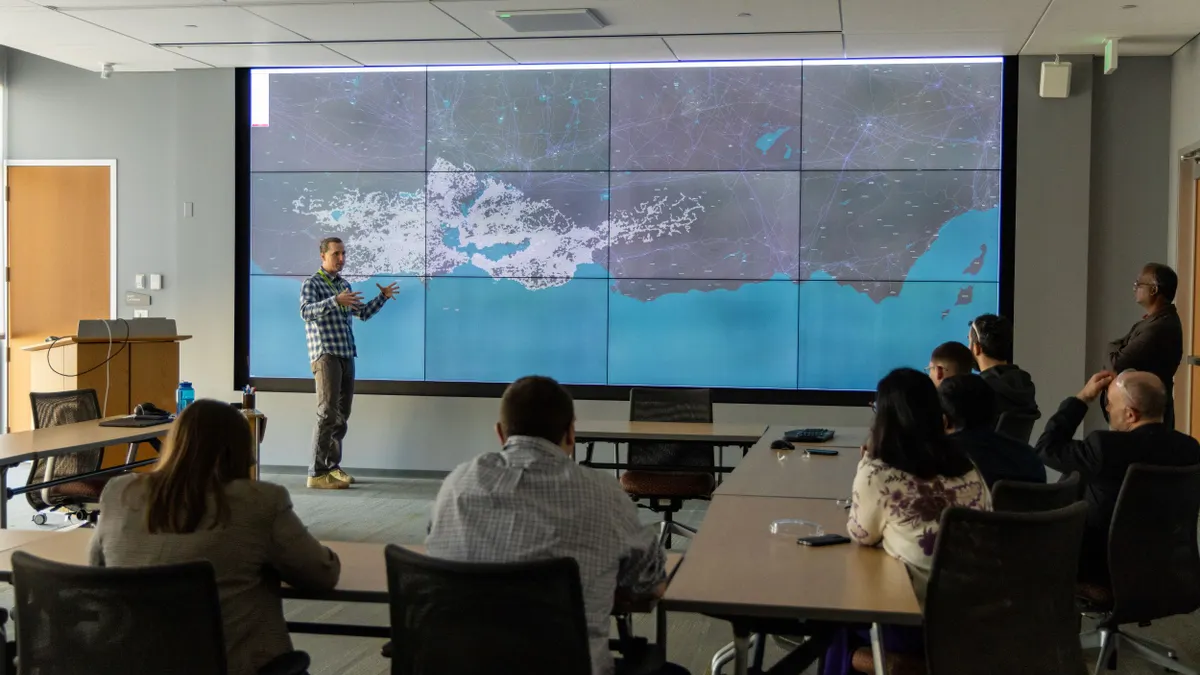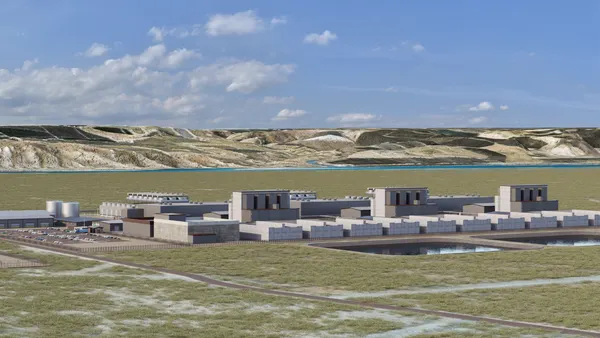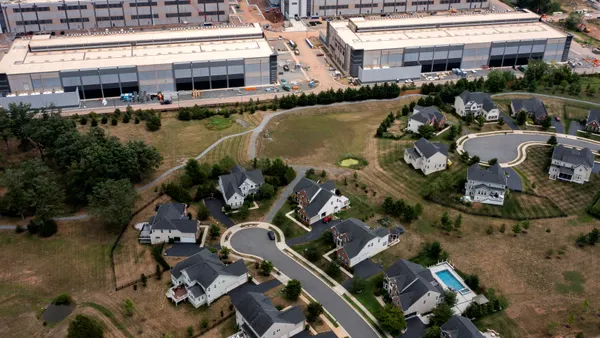Dive Brief:
- Colocating new hyperscale data centers with existing nuclear power plants can significantly reduce project costs and delays by eliminating the need for new transmission infrastructure and grid interconnection studies, according to a paper released this month by the Nuclear Energy Institute.
- Authored by former Exelon and PJM Interconnection executive Michael Kormos, “The Co-Located Load Solution” cites existing nuclear plants’ reliability, minuscule carbon footprint, high generation capacity and stable power output over 18- to 24-month refueling cycles as advantages over other forms of behind-the-meter generation.
- Moreover, colocation can be a mutually beneficial arrangement where “the data center gets the carbon-free electricity it wants without lengthy delays…and the nuclear plant gets a steady customer, forestalling premature retirement and enabling [Nuclear Regulatory Commission] license extension and potential uprates,” Kormos said.
Dive Insight:
The data center industry could account for more than 9% of U.S. electricity demand by 2030, more than double today’s level, according to a May study by the Electric Power Research Institute.
Data center operators are increasingly exploring long-term colocation partnerships with existing nuclear power plants. Under these arrangements, the data center forgoes a grid connection in exchange for a long-term commitment to purchase a substantial amount of power from the plant before the remainder — if any — reaches other customers.
Though data centers have historically consumed 100 MW of power or less, larger-scale facilities capable of running energy-intensive artificial intelligence and other high-performance computing applications can consume up to 1 GW, Kormos said in the paper.
Exelon and American Electric Power challenged a proposed interconnection agreement before the Federal Energy Regulatory Commission last month that would facilitate a colocation arrangement between Amazon Web Services and Talen Energy’s Susquehanna nuclear plant, saying it would shift up to $140 million in annual transmission costs to PJM ratepayers.
Colocation agreements could also reduce power supplies available to other customers served by the colocated generator, former FERC Commissioner Tony Clark told a House subcommittee on June 4.
Concerns about new behind-the-meter loads increasing costs by more than new grid-connected loads are misplaced, Kormos said in the paper.
While any new demand from a grid-connected generator will affect power prices, “dedicating a portion of existing generation to a particular customer behind-the-meter through a direct connection will have the same effect on the supply-demand dynamic as serving the same amount of new load through deliveries over the transmission system…or from a remote generator under a power purchase agreement,” he wrote.
For similar reasons, shifting existing generation to serve data center loads behind-the-meter should not affect grid reliability more than front-of-meter grid service “unless the new load would not otherwise be built or delayed for years,” Kormos said.
Shifting existing generation behind the meter could in fact free up grid capacity for new renewables, potentially reducing interconnection delays and curtailment rates for those resources, he added, citing a Constellation Energy study that found colocating data centers at existing Illinois nuclear plants could reduce wind and solar curtailment by 80%.
Kormos also pushed back on AEP and Exelon’s complaint about the Talen-AWS deal’s potential to shift transmission costs onto ratepayers.
“[The utilities’ $140 million] calculation is nothing more than the revenue that the transmission owner would have been paid if the data center had connected in front of the meter where it would take grid service and benefit from being connected from the grid,” he wrote. But “the [colocated] data center does not cause grid costs to be incurred, cannot take any service from the grid and is not a customer of the transmission owner…[so] there are no costs to shift.”
Grid-connected data center growth, coupled with generator retirements in northern Virginia, has necessitated more than $5 billion in transmission investment to serve the new load, Kormos noted.
A spokesperson for Constellation Energy, an NEI member that operates the United States’ largest commercial nuclear fleet, cheered Kormos’s findings.
“Pairing nuclear plants with data centers will allow us to extend the life of these clean, safe and reliable facilities and deliver a win for the environment, large electricity customers and utility customers alike,” said Paul Adams, senior manager for strategic communications and media relations.














